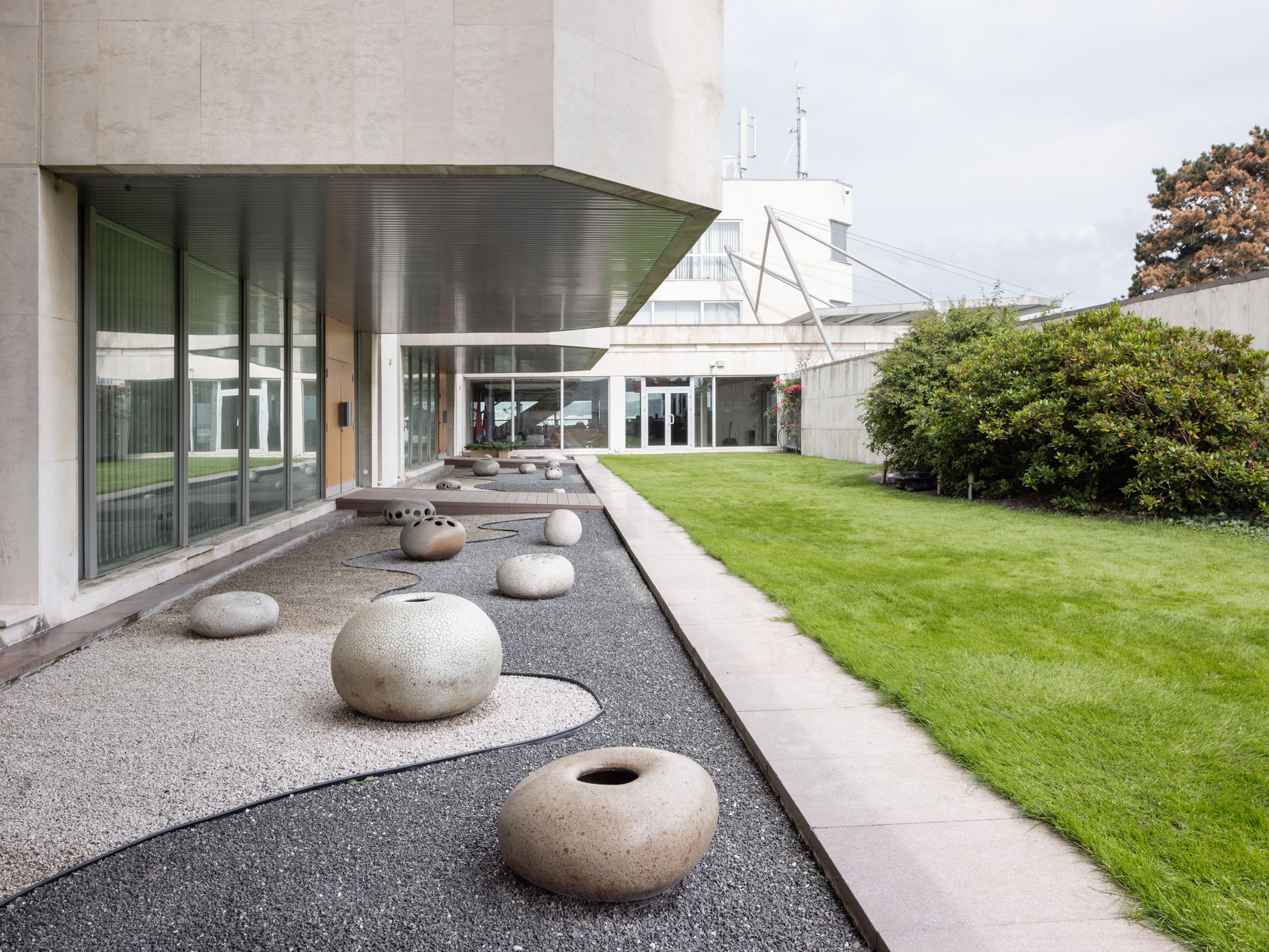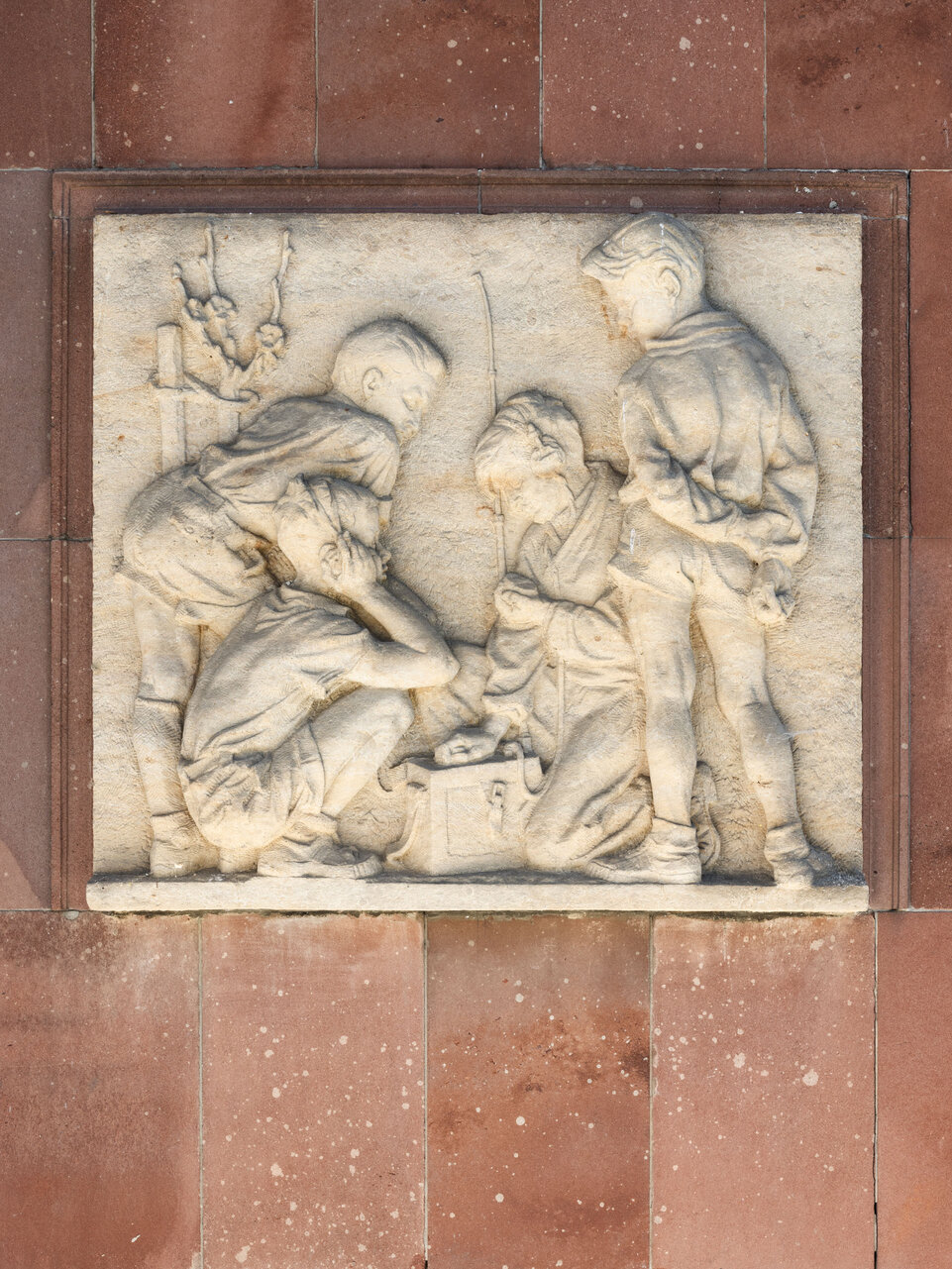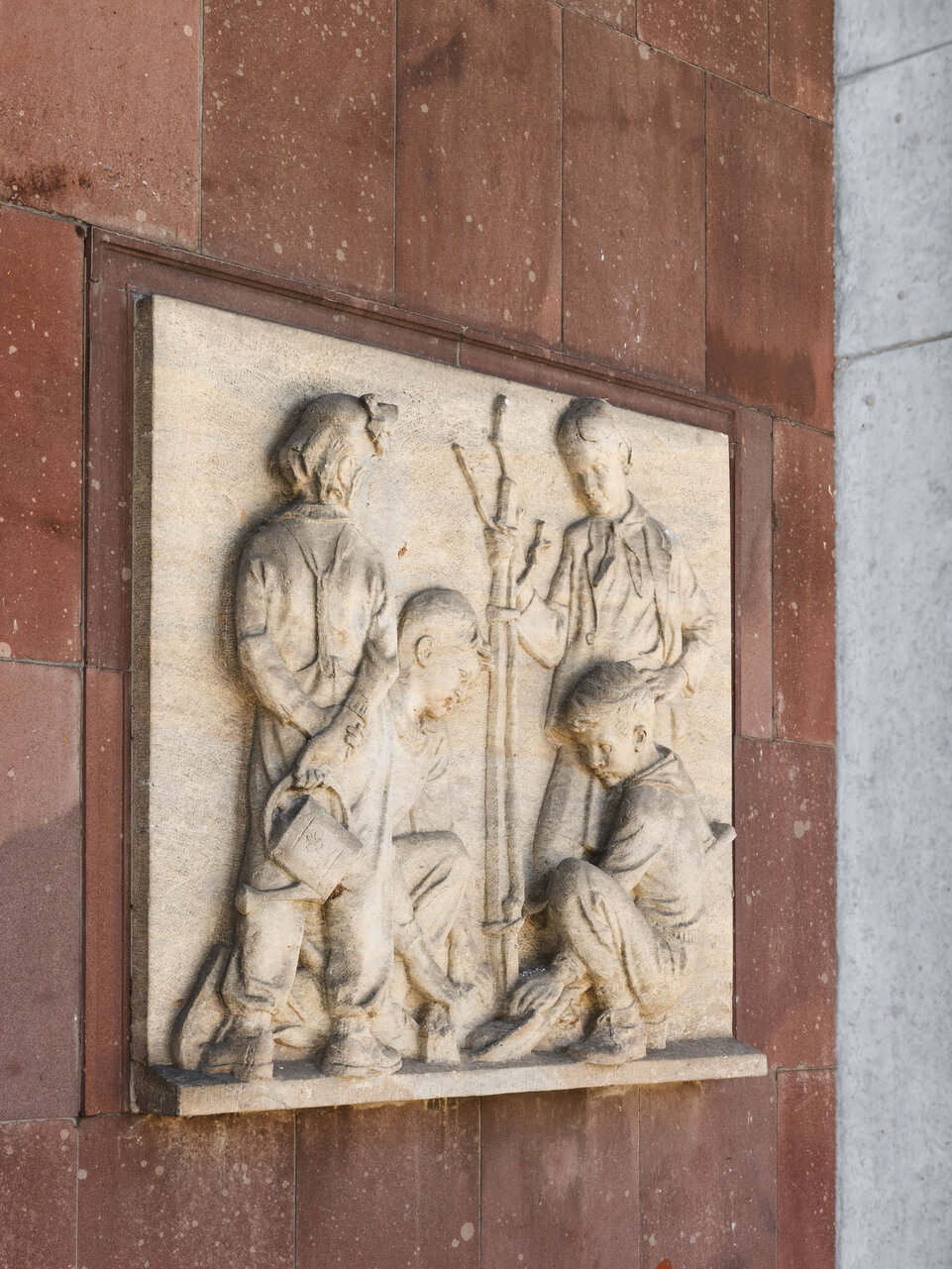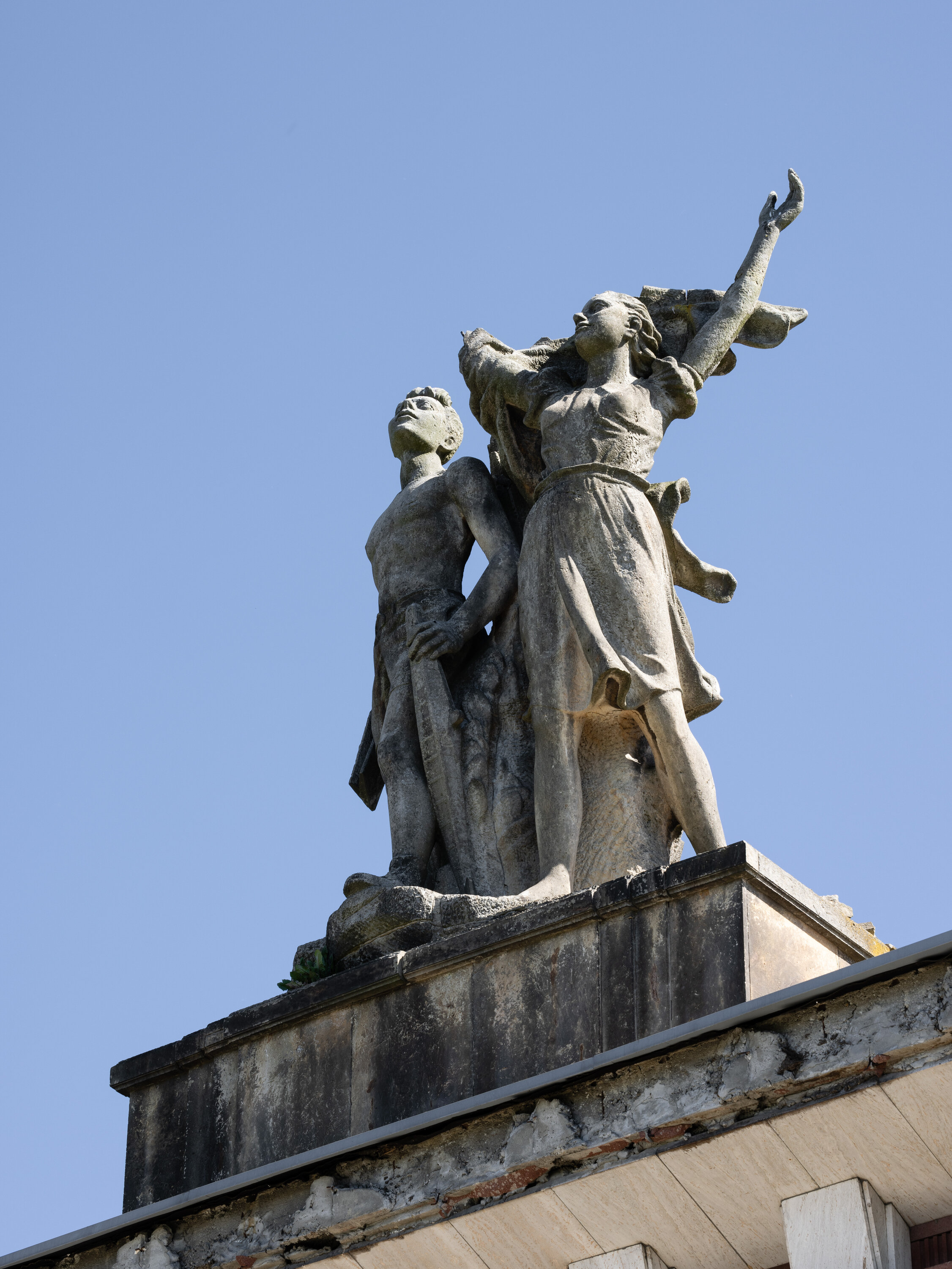During socialism, the accommodation facility at Bôrik served as a principal hotel for the party apparatus, high-ranking Communist Party officials, and foreign delegations. Today, it is best known as a government hotel and, although now open to the public, is primarily intended for use by government officials and their foreign visitors. The project was originally designed in 1967 by the three architects Štefan Svetko, Štefan Ďurkovič, and Stanislav Talaš. Construction was eventually carried out between 1969 and 1973 in accordance with a modified version by Štefan Svetko and Štefan Ďurkovič.
In the rear area of the garden, where the ceramic objects of Jozef Sušienka are set on pebble surfaces, rests the now defunct fountain Springs created in 1974 by Juraj Hovorka. Made of black syenite polished into smooth surfaces, it comprises two adjacent stelae, each composed of three segments of stone. Between the blocks is an irregularly contoured void that evokes a riverbed, cave entrance, or rock formation shaped by the flow of water. The contrast between the geometric forms and the irregular organically, even dramatically, modelled fissure creates a striking artistic impression. The inner surfaces of the blocks display a rounded, contoured core that holds them in tension, creating the illusion of an open gateway. The polished outer surfaces are disrupted by reliefs of undulating streams that intermingle. Juraj Hovorka was fascinated by the sculptural expression of nature, growth, rivers, and other water elements, and engaged with these topics in several of his works. His creations include the monumental relief Danube River Waterline for the Directorate of River Systems (1969), and Nitra River Sculpture for Nové Zámky (1977). The stelae stand in a pool of basalt cobbles, and stepping blocks enable visitors to approach the fountain and metaphorically to merge with it. From its current condition, it is not possible to discern how the water element completed the fountain.
VB
Research status as of 31 December 2023.



